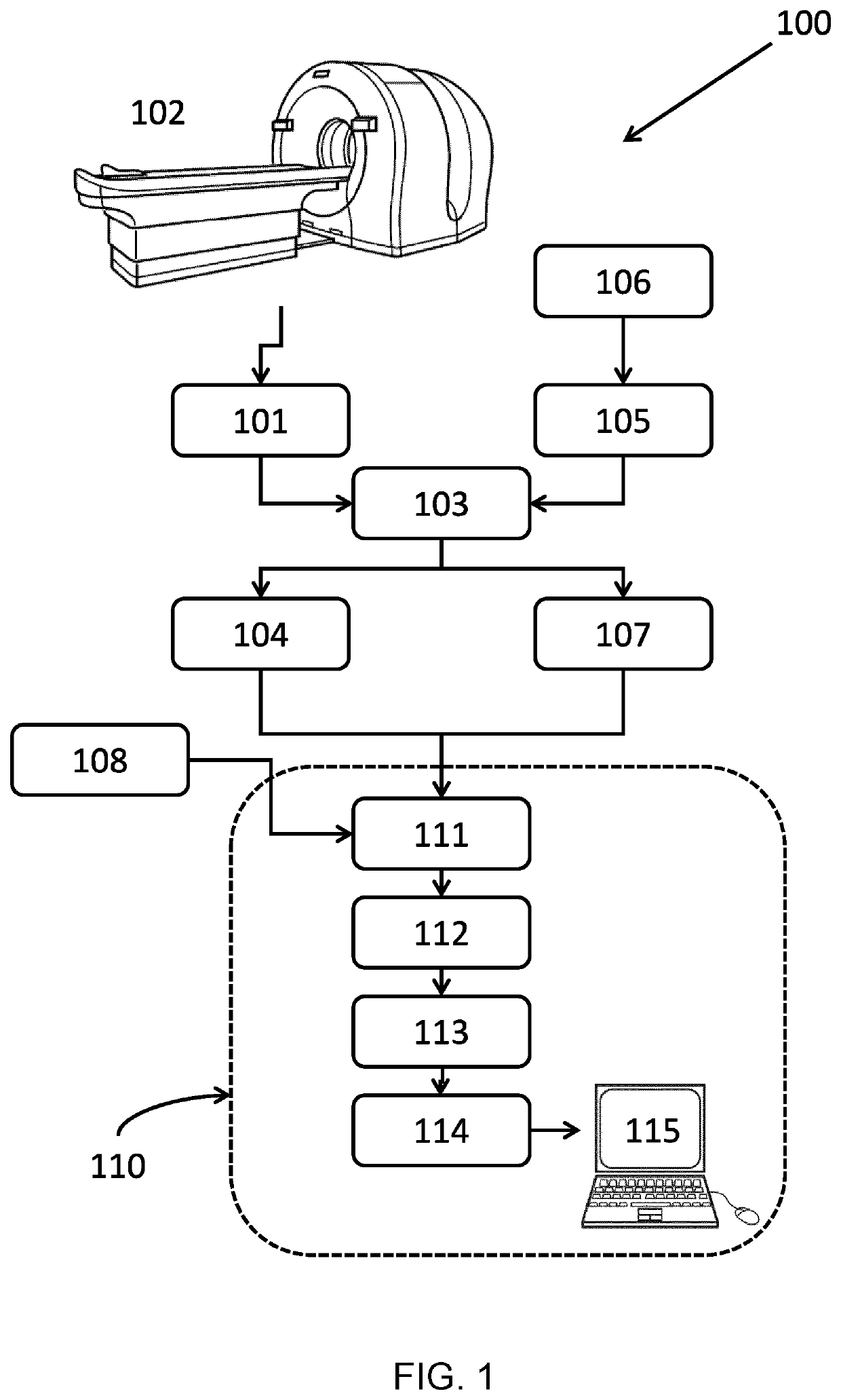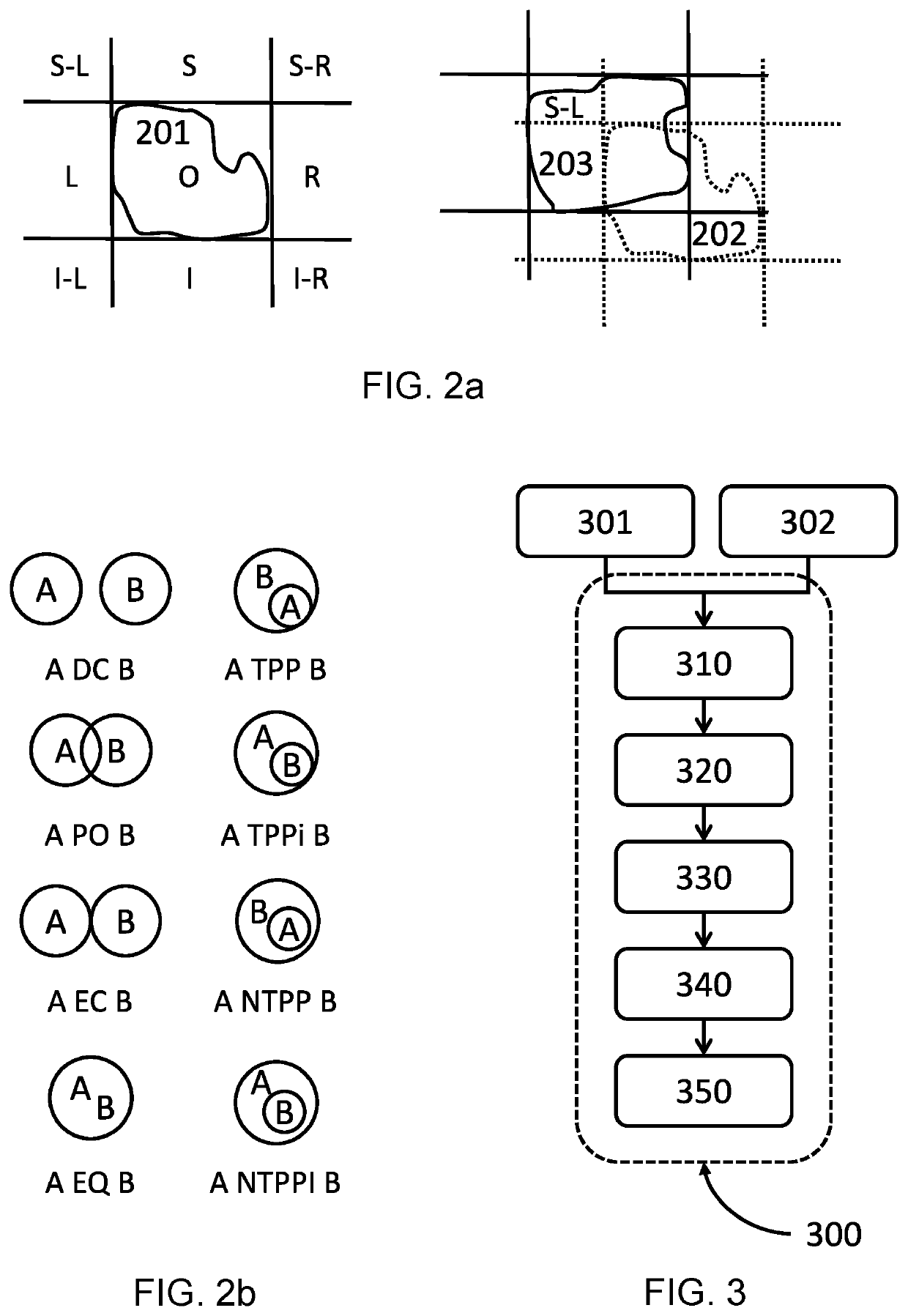Automated qualitative description of anatomical changes in radiotherapy
a radiotherapy and qualitative technology, applied in the field of automatic monitoring of anatomical changes, can solve the problems of time-consuming, manual processing and interpretation, visual assessment, and affecting the anatomy of the patient, and achieve the effect of convenient for the physician and faster and more accurate delivery
- Summary
- Abstract
- Description
- Claims
- Application Information
AI Technical Summary
Benefits of technology
Problems solved by technology
Method used
Image
Examples
Embodiment Construction
[0030]FIG. 1 illustrates a system for monitoring anatomical changes 110 in a subject in radiation therapy. In this example, the system is illustrated as part of an arrangement 100 for medical imaging and analysis.
[0031]In the arrangement for medical imaging and analysis 100, a planning image 101 is acquired of the subject to be treated by an imaging device 102. The image can be a computed tomography image (CT), magnetic resonance image (MR), positron emission tomography (PET) image, another medical image, or a combined image, such as a combined PET / CT or PET / MR image. In FIG. 1, as an example, a PET / CT imaging device 102 is illustrated. The regions of interest (ROIs) are delineated in this first image using a contouring tool 103 to provide first anatomical image data 104. The ROIs in the subject will comprise at least one target structure (TS), normally a tumor, but may also include one or more organs at risk (OARs). A contouring tool commonly interacts with the user, who can be for...
PUM
 Login to View More
Login to View More Abstract
Description
Claims
Application Information
 Login to View More
Login to View More - R&D
- Intellectual Property
- Life Sciences
- Materials
- Tech Scout
- Unparalleled Data Quality
- Higher Quality Content
- 60% Fewer Hallucinations
Browse by: Latest US Patents, China's latest patents, Technical Efficacy Thesaurus, Application Domain, Technology Topic, Popular Technical Reports.
© 2025 PatSnap. All rights reserved.Legal|Privacy policy|Modern Slavery Act Transparency Statement|Sitemap|About US| Contact US: help@patsnap.com



